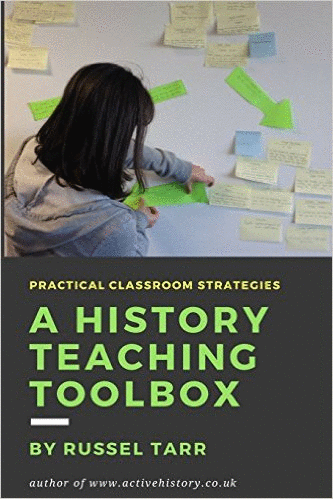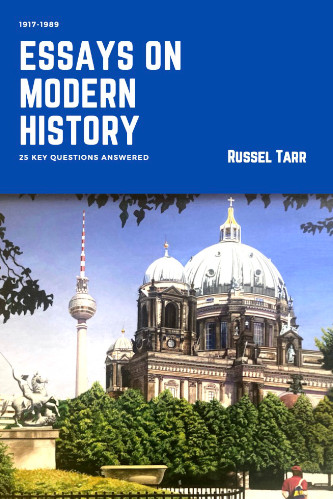IB History: ActiveHistory
An ActiveHistory subscription provides everything you need to construct and deliver a two-year IBDP History course from start to finish using the ActiveHistory IB History Hub.
These consist not just of lesson plans, worksheets and teacher notes, but also multimedia lectures and interactive games and historical simulations ideal for remote learning and self-study.
Use the ActiveHistory curriculum maps and the ActiveHistory syllabus topics to design your own course effectively.
We also have you covered for the Internal Assessment, Extended Essay and Theory of Knowledge in History, not to mention Essay and Sourcework Skills, IBDP History Model Essays and IBDP History Sample Sourcework Exercises / Model answers!
The Spanish Second Republic
Read this doc on Scribd: Causes of the Spanish Civil War
Worksheet to accompany the interactive unit at www.activehistory.co.uk / 1 1931-1936: Why did the Spanish Second Republic Fail? Recommended Websites http://libro.uca.edu/payne2/payne25.htm http://www.spartacus.schoolnet.co.uk/SPsecond.htm Book References ? C2 Andrew Forrest "The Spanish Civil War" ? P15-25 Angela Knight "The Spanish Civil War" Overview 1930-31: Primo de Rivera was forced to resign in 1930. Elections were held and the Republicans won a landslide, so in 1931 King Alfonso XIII abdicated. 1931-33: A Left Wing government ruled Spain with Azana the key figure. 1933-36: A Right-Wing government ruled Spain, with Robles the key figure. 1936: A Left Wing Popular Front government ruled Spain, led by Azana. 1936: A Right-Wing rebellion started the Spanish Civil War, led by Franco. Task 1: Chronological Outline Use the information which follows to add extra important points to the table of events which you put together at the beginning of this study unit. The Left Republic of 1931-3 ? The Republican government granted Catalan autonomy, much to the disgust of the Right. ? The Agrarian Reform Law allowed the state to nationalise the latifundia and then hand them over to the peasants; however, compensating the landowners was complicated and expensive, and the government was divided on the issue of collectivisation and so, it was never implemented on a large scale. As a result it angered the landowners yet disappointed the peasants too. ? Primo’s Labour Arbitration Scheme was extended and improved with the help of the UGT, which trebled its membership during this period. ? The Jesuits were dissolved, the state withdrew subsidies to the Church, civil marriage was permitted, divorce was allowed and Prime Minister Azana, wellknown for being direct and honest (or insensitive and arrogant, depending on your perspective), said “all the convents in Madrid are not worth the life of a single Republican”. ? Half of the officer corps were pressed into retirement at full pay (leaving little money for social reform); Azana told the army they had no right to challenge the government; a military revolt by General Sanjuro in 1932 was crushed. ? The government’s measures led to the foundation of the right-wing Catholic CEDA party led by Gil Robles. At the same time a fascist party – the Falange (Phalanx) - was established by the son of Primo de Rivera, Jose Antonio. Worksheet to accompany the interactive unit at www.activehistory.co.uk / 2 The Right Republic of 1933-5: “Two Black Years” ? In 1933 government troops shot dead anarchist prisoners in Cadiz. This precipitated a crisis that led to elections being called for November 1933. ? A right-wing coalition government assumed power after the elections. It reversed the process of reform and cancelled the measures against the Church. The period from 1933 to 1935 became known as the “two black years” by those on the Left, who became divided between socialists (led by Prieto) who favoured involvement with the coaltion and those of the UGT (led by Caballero) who favoured violent opposition to it. ? In 1934 opposition to the reactionary government exploded into outright violence in the Asturias Uprising: an anarchist miners’ revolt lasting two weeks which was only suppressed with difficulty by the troops of General Franco, who became known as the "Butcher of Asturias". Mass arrests followed (even Azana was briefly arrested), left wing newspapers were closed and the Catalan Autonomy Statute was suspended. ? The Asturias Uprising was “a watershed in the history of the Republic” (Knight). It pushed the Left (especially the UGT of Caballero, the ‘Spanish Lenin’) towards a more revolutionary position, and convinced the Right that the Fascism promoted by Rivera’s Falange was the only means of controlling the workers. ? The international situation strongly influenced this polarising trend: the growing power of Fascism and Communism in Europe convinced many on both sides of the political spectrum that a moderate political stance would mean disaster. The Countdown to War ? In 1936 an election was called. ? A Popular Front of Communists, Socialists, Republicans and Separatists was formed to oppose the government. The right wing formed the National Front. Increasing tension meant that the Left now regarded the Right as Fascists; the Right regarded the Left as Communists. ? The Popular Front won only slightly more votes than the National Front, but the voting system transformed this into a decisive majority of seats in Parliament. ? However, Caballero’s socialists, still bitter about the failures of Azana’s earlier government, refused to join. This weakened not only the government but also the Left wing of Spanish politics as a whole. ? Despite these problems, the new government immediately reintroduced the reforms of the 1931-3 government, banned the Falange and posted Franco to Morocco to keep him out of the picture. ? Disorder and political violence spread throughout the country. ? The anarchist CNT encouraged the peasants to take over the land; ? The socialist UGT called a general strike among the proletariat; ? The fascist Falange started to grow dramatically. ? Most seriously, the army began plotting to overthrow the ineffectual new government. The leader of the plot was General Mola. ? On the 13th of July the monarchist politician, Calvo Sotelo, was assassinated by Republican police in revenge for the murder of one of their men by a Falangist. The military now had the perfect pretext to make their move. The revolt began on the 17th of July in Spanish Morocco – led by Franco. Worksheet to accompany the interactive unit at www.activehistory.co.uk / 3 Task 2 Use the same information, and also any other websites and textbooks available to you, to complete this table. Successes Failures Regional Economic / Social Political Military Religious Worksheet to accompany the interactive unit at www.activehistory.co.uk / 4 Task 3: Why did the Spanish Second Republic Fail? Debate each of these statements as a class. For each one, note down the most convincing argument for and against it, and try to form an overall judgement. Evidence in favour "The Republic was less successful than the regime of Primo" Evidence against Conclusion "The Republic's mistake was pursuing too much change, not too little" "The Republic was doomed from the outset" "The Left Wing parties were more to blame for the collapse of the Republic than those of the Right" Further materials on the origins of the Spanish Civil War can be found at www.activehistory.co.uk
Worksheet to accompany the interactive unit at www.activehistory.co.uk / 1 1931-1936: Why did the Spanish Second Republic Fail? Recommended Websites http://libro.uca.edu/payne2/payne25.htm http://www.spartacus.schoolnet.co.uk/SPsecond.htm Book References ? C2 Andrew Forrest "The Spanish Civil War" ? P15-25 Angela Knight "The Spanish Civil War" Overview 1930-31: Primo de Rivera was forced to resign in 1930. Elections were held and the Republicans won a landslide, so in 1931 King Alfonso XIII abdicated. 1931-33: A Left Wing government ruled Spain with Azana the key figure. 1933-36: A Right-Wing government ruled Spain, with Robles the key figure. 1936: A Left Wing Popular Front government ruled Spain, led by Azana. 1936: A Right-Wing rebellion started the Spanish Civil War, led by Franco. Task 1: Chronological Outline Use the information which follows to add extra important points to the table of events which you put together at the beginning of this study unit. The Left Republic of 1931-3 ? The Republican government granted Catalan autonomy, much to the disgust of the Right. ? The Agrarian Reform Law allowed the state to nationalise the latifundia and then hand them over to the peasants; however, compensating the landowners was complicated and expensive, and the government was divided on the issue of collectivisation and so, it was never implemented on a large scale. As a result it angered the landowners yet disappointed the peasants too. ? Primo’s Labour Arbitration Scheme was extended and improved with the help of the UGT, which trebled its membership during this period. ? The Jesuits were dissolved, the state withdrew subsidies to the Church, civil marriage was permitted, divorce was allowed and Prime Minister Azana, wellknown for being direct and honest (or insensitive and arrogant, depending on your perspective), said “all the convents in Madrid are not worth the life of a single Republican”. ? Half of the officer corps were pressed into retirement at full pay (leaving little money for social reform); Azana told the army they had no right to challenge the government; a military revolt by General Sanjuro in 1932 was crushed. ? The government’s measures led to the foundation of the right-wing Catholic CEDA party led by Gil Robles. At the same time a fascist party – the Falange (Phalanx) - was established by the son of Primo de Rivera, Jose Antonio. Worksheet to accompany the interactive unit at www.activehistory.co.uk / 2 The Right Republic of 1933-5: “Two Black Years” ? In 1933 government troops shot dead anarchist prisoners in Cadiz. This precipitated a crisis that led to elections being called for November 1933. ? A right-wing coalition government assumed power after the elections. It reversed the process of reform and cancelled the measures against the Church. The period from 1933 to 1935 became known as the “two black years” by those on the Left, who became divided between socialists (led by Prieto) who favoured involvement with the coaltion and those of the UGT (led by Caballero) who favoured violent opposition to it. ? In 1934 opposition to the reactionary government exploded into outright violence in the Asturias Uprising: an anarchist miners’ revolt lasting two weeks which was only suppressed with difficulty by the troops of General Franco, who became known as the "Butcher of Asturias". Mass arrests followed (even Azana was briefly arrested), left wing newspapers were closed and the Catalan Autonomy Statute was suspended. ? The Asturias Uprising was “a watershed in the history of the Republic” (Knight). It pushed the Left (especially the UGT of Caballero, the ‘Spanish Lenin’) towards a more revolutionary position, and convinced the Right that the Fascism promoted by Rivera’s Falange was the only means of controlling the workers. ? The international situation strongly influenced this polarising trend: the growing power of Fascism and Communism in Europe convinced many on both sides of the political spectrum that a moderate political stance would mean disaster. The Countdown to War ? In 1936 an election was called. ? A Popular Front of Communists, Socialists, Republicans and Separatists was formed to oppose the government. The right wing formed the National Front. Increasing tension meant that the Left now regarded the Right as Fascists; the Right regarded the Left as Communists. ? The Popular Front won only slightly more votes than the National Front, but the voting system transformed this into a decisive majority of seats in Parliament. ? However, Caballero’s socialists, still bitter about the failures of Azana’s earlier government, refused to join. This weakened not only the government but also the Left wing of Spanish politics as a whole. ? Despite these problems, the new government immediately reintroduced the reforms of the 1931-3 government, banned the Falange and posted Franco to Morocco to keep him out of the picture. ? Disorder and political violence spread throughout the country. ? The anarchist CNT encouraged the peasants to take over the land; ? The socialist UGT called a general strike among the proletariat; ? The fascist Falange started to grow dramatically. ? Most seriously, the army began plotting to overthrow the ineffectual new government. The leader of the plot was General Mola. ? On the 13th of July the monarchist politician, Calvo Sotelo, was assassinated by Republican police in revenge for the murder of one of their men by a Falangist. The military now had the perfect pretext to make their move. The revolt began on the 17th of July in Spanish Morocco – led by Franco. Worksheet to accompany the interactive unit at www.activehistory.co.uk / 3 Task 2 Use the same information, and also any other websites and textbooks available to you, to complete this table. Successes Failures Regional Economic / Social Political Military Religious Worksheet to accompany the interactive unit at www.activehistory.co.uk / 4 Task 3: Why did the Spanish Second Republic Fail? Debate each of these statements as a class. For each one, note down the most convincing argument for and against it, and try to form an overall judgement. Evidence in favour "The Republic was less successful than the regime of Primo" Evidence against Conclusion "The Republic's mistake was pursuing too much change, not too little" "The Republic was doomed from the outset" "The Left Wing parties were more to blame for the collapse of the Republic than those of the Right" Further materials on the origins of the Spanish Civil War can be found at www.activehistory.co.uk

© 1998-2025 Russel Tarr, ActiveHistory.co.uk Limited (Reg. 6111680)
1 Torrin Drive, Shrewsbury, Shropshire, SY3 6AW, England
Privacy Policy | Contact






